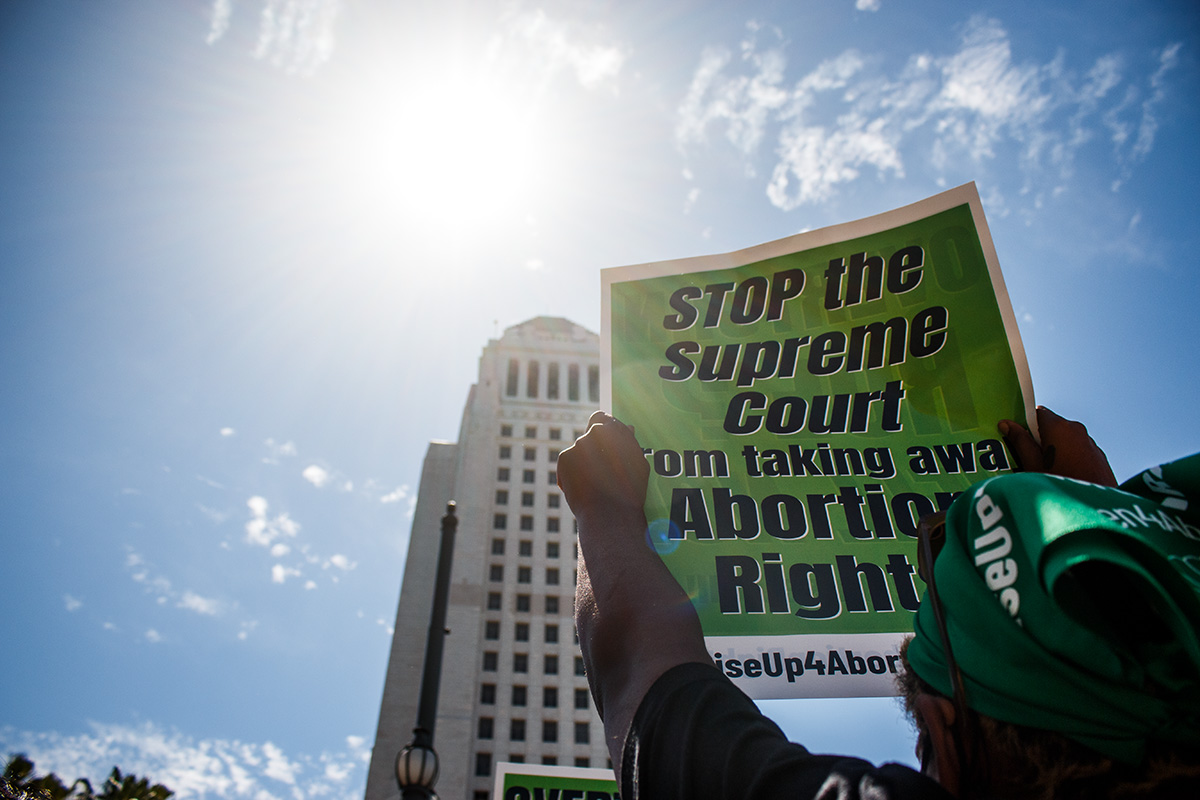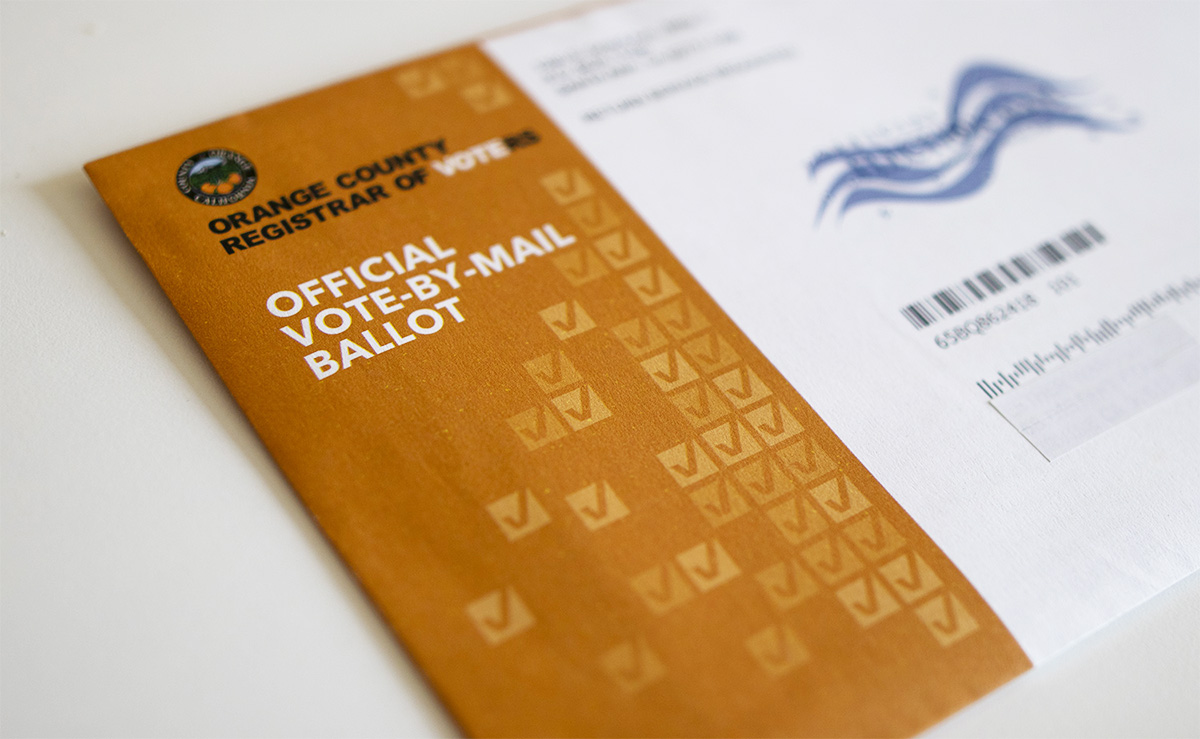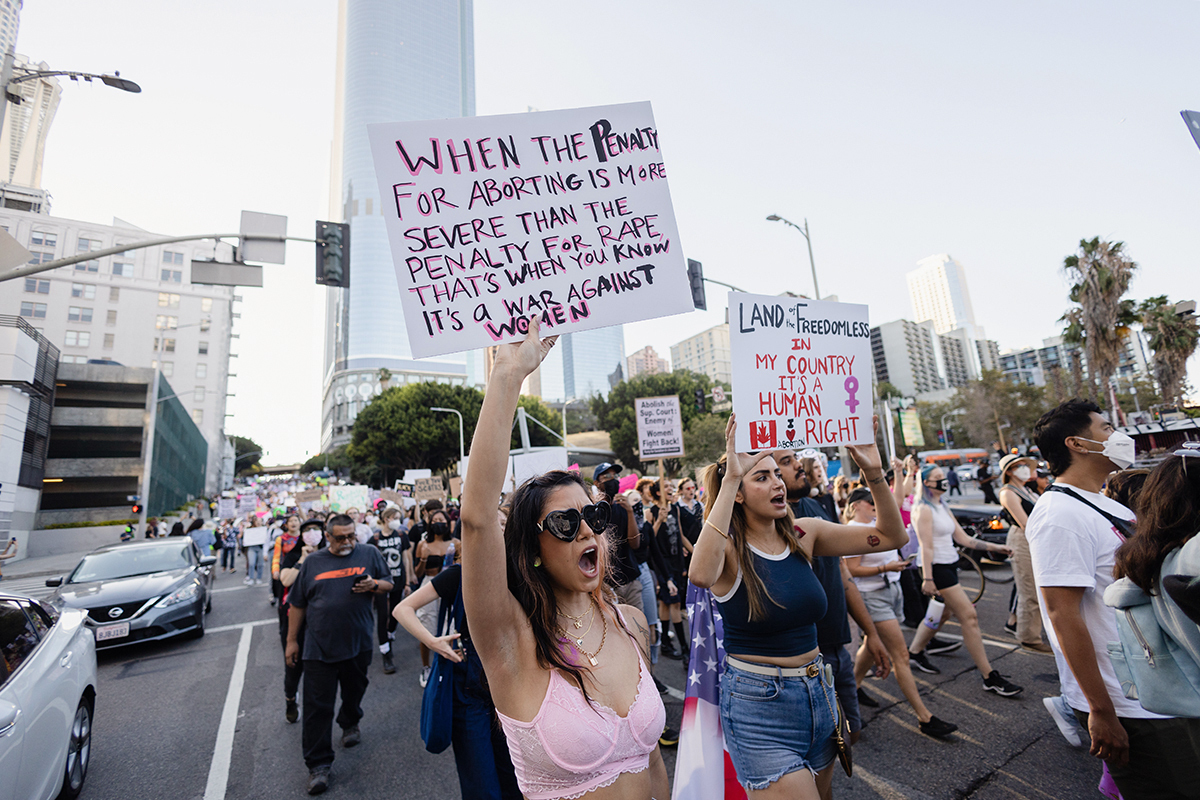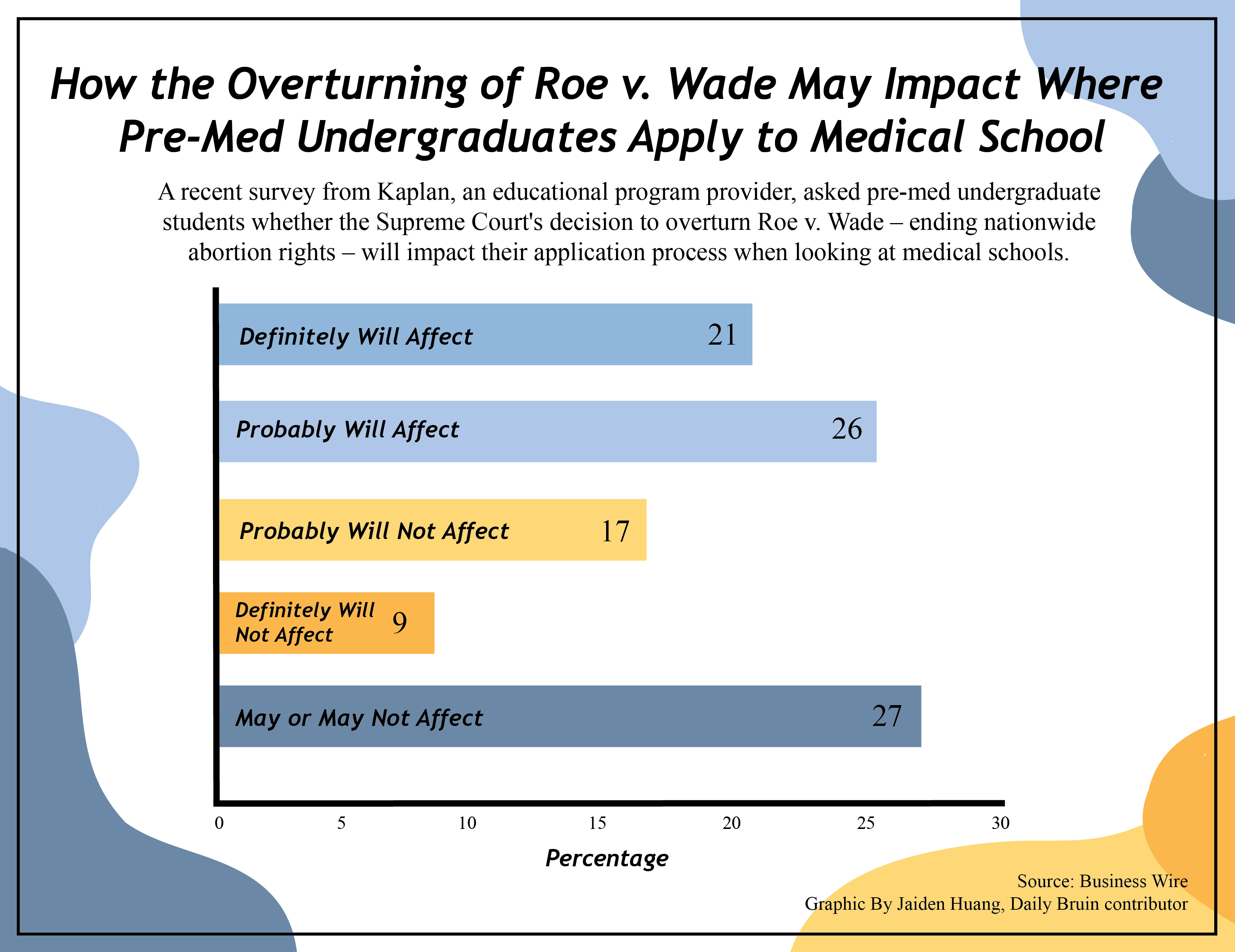Editorial: Legislators must prevent revival of outdated abortion laws after Arizona ruling
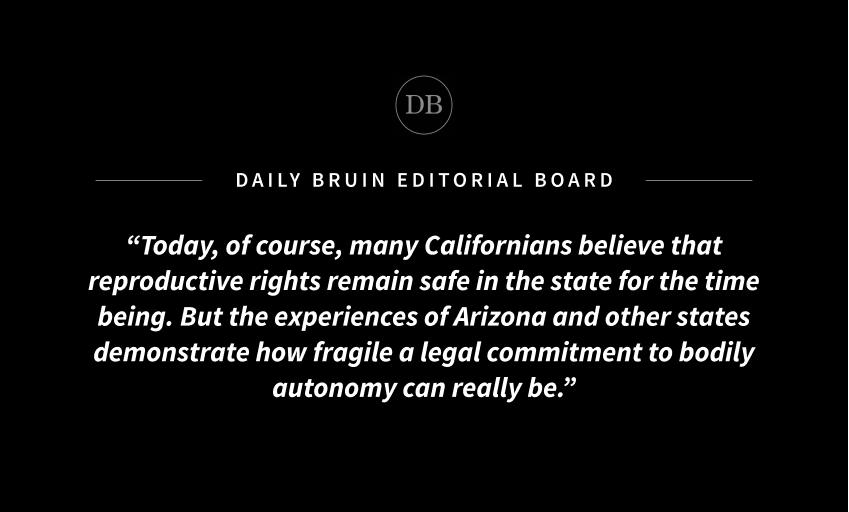
By Editorial Board
April 14, 2024 8:29 p.m.
It’s difficult to fathom how much the world has changed in 160 years.
But it’s even more difficult to fathom why a sect of the American judiciary is trying to drag the state of reproductive rights in this country back to the Civil War era.
On April 9, the Arizona Supreme Court ruled that a draconian abortion law from 1864 could soon be enforced again, overturning an appellate court decision that shielded doctors who performed abortions in the first 15 weeks of pregnancy from prosecution.
The law’s provisions – should they be implemented – ban abortion in almost all cases, with the only stated exception being when the life of a woman is threatened. It does not allow abortion at any trimester of pregnancy or in cases of rape or incest.
Those deemed to have broken the law, which targets anyone who performs a surgical abortion or provides the drugs – typically mifepristone and misoprostol – for a medical abortion, could face between two to five years in prison, according to the Associated Press.
But Arizona is not alone.
According to the Center for Reproductive Rights, 14 states have already criminalized abortion in most circumstances. This figure, however, does not include states such as Florida and Nebraska, which have banned abortions after a specified gestational age, or states such as Arizona and Wyoming, where total or near-total abortion bans are on the books but remain unenforced for the moment due to ongoing litigation.
When including these 11 states that the CRR describes as “hostile to abortion rights,” the total figure rises to half of the states in the United States where access to abortion has been banned or is under immediate threat.
Even abortion bans with exceptions like the one Arizona would offer, however, are still highly restrictive in practice, as most health care providers in states with bans are unwilling to provide abortions out of fear of possible criminal charges or penalties.
The emotional and legal burden that patients face, including those who may be forced to reveal sensitive medical or personal information in order to be granted an exemption, is another major barrier.
According to the New York Times, exceptions to state abortion bans have only been used a handful of times, with some states reporting zero legal abortions since the implementation of their bans.
But the efforts of state judges and legislatures to restrict reproductive freedom also extend beyond abortion. In Alabama, the state Supreme Court controversially ruled that frozen embryos had the same legal rights as children in a decision that allowed lawsuits against in vitro fertilization providers under Alabama’s Wrongful Death of a Minor Act.
The ruling led IVF programs throughout the state to halt their operations over concerns they could face criminal and civil penalties for the loss of embryos during the normal process of IVF treatment.
While the state government subsequently passed legislation intended to shield IVF providers from these liabilities, the new law did not challenge the Alabama Supreme Court’s finding on the legal personhood of embryos, which has continued to elicit substantial concerns from providers and patients alike.
This is what America looks like two years after the U.S. Supreme Court’s repeal of Roe v. Wade.
The aftershocks of the 5-4 decision to overturn Roe in Dobbs v. Jackson Women’s Health Organization have been absolutely catastrophic, with states now being given free rein to restrict bodily autonomy by reviving antiquated laws from a time when women were denied the right to vote.
The Arizona court’s decision is a particularly striking example of this trend.
One hundred and sixty years ago, Arizona was not a state. In 1864, the Arizona Territory, which was once part of the larger Territory of New Mexico, had been recently created amid the Civil War.
The first Arizona territorial legislature, composed of 27 members divided into a smaller upper house and a larger lower house, was convened and would ultimately pass the 160-year-old abortion law now on the verge of being returned to force.
Further research into this period by several outlets, spurred by the recent ruling, has offered further questions about the ban and its legitimacy.
While we don’t appear to have a great deal of information surrounding the elections for the territorial legislature, the 1870 census reported fewer than 10,000 inhabitants in Arizona. This figure does not include the Indigenous peoples who – lacking citizenship and voting rights – represented the vast majority of the territory’s population at the time and became the targets of military campaigns and ethnic cleansing organized by the federal government, including the infamous Long Walk that the Diné, or Navajo, experienced in 1864.
Given the size of the white settler population in Arizona at the time – smaller even than the 1870 count – the lack of voting rights for women and widespread antipathy toward the federal government, the actual electorate of the first legislature may have been only around a thousand people or fewer, according to the American Prospect.
Thus, the votes of several thousand settlers at most, even during that time representing a fraction of the population in the territory, have become the alleged democratic basis to impose a far-reaching abortion ban on a population of millions today.
Other sources reveal the widespread social and political gaps between the authors of the new law and the Arizonans who may soon become subject to it. For instance, the Washington Post noted that the speaker of the territorial legislature, a man named William Claude Jones, was an alleged child predator and married several teenage girls – one as young as 12 years old – as a middle-aged man.
Such behavior, even by the standards of the time, was deeply disturbing to Jones’ contemporaries. And yet, the law he passed may soon define Arizona’s public stance on reproductive health care if the current state government does not act.
Another revelation, itself shocking in its own ways, was recently published in the Los Angeles Times: Most of the 1864 Arizona abortion law was directly copied from California’s own legal code at the time.
Today, of course, many Californians believe that reproductive rights remain safe in the state for the time being. But the experiences of Arizona and other states demonstrate how fragile a legal commitment to bodily autonomy can really be.
After all, how many people could have foreseen the overturn of Roe v. Wade after it had been established law for nearly half a century?
The revival of old laws and the creation of new laws to restrict access to reproductive health care are horrifying consequences of the post-Roe era.
These recent judicial decisions surrounding reproductive health care in Arizona and Alabama, however, have even been criticized by the Republicans most responsible for the death of Roe – former President Donald Trump foremost among them – who have begun to realize their political vulnerability on this issue.
The justices of the Supreme Court justified their decision to allow states to ban abortion on the basis that it returned political questions to these states, allowing them to be decided by the people.
But it’s clear today that they were not referring to the current population of the U.S. – 61% of whom oppose the repeal of Roe v. Wade.
Between 83% and 85% of Americans today support abortion in all or some circumstances, including 47% who think abortion in all or most cases should be legal and 36% who think abortion in only a few cases should be legal.
Perhaps they meant Americans of another time. In the words of the author L.P. Hartley, however, “the past is a foreign country: they do things differently there.”
Why must the people of the present be persecuted by laws devised by a small sect of the people of the past, foreign to the values of our society and unable to imagine the world future generations would build?
What right do they have to govern us?
We do things differently here.



